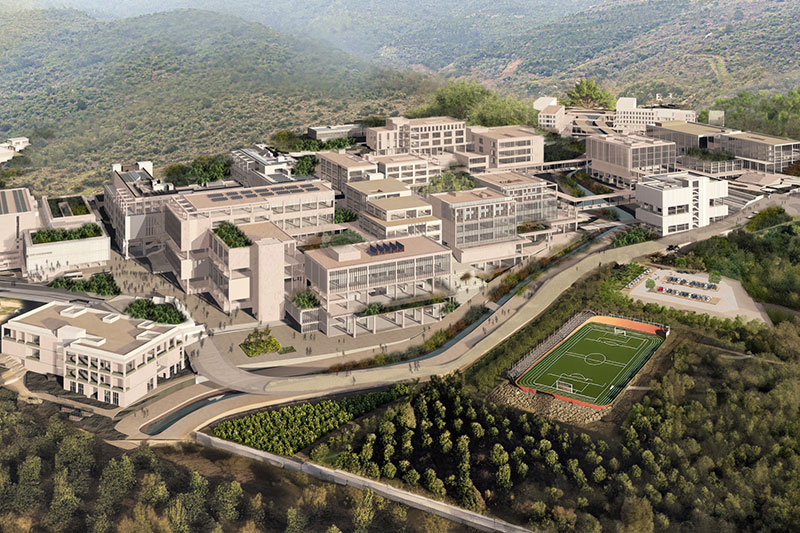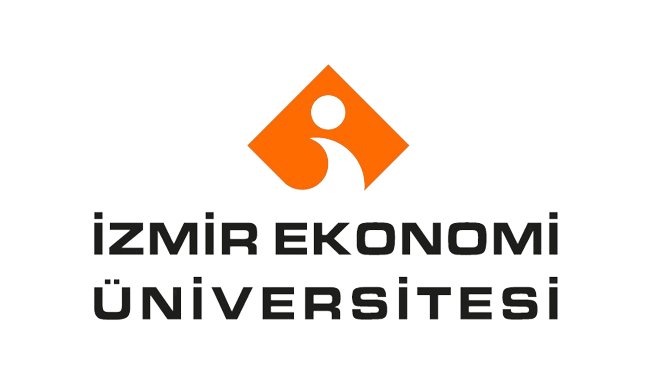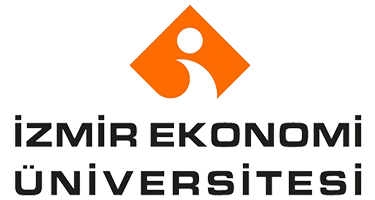AE 301 | Ders Tanıtım Bilgileri
| Dersin Adı |
Aerodynamics
|
|
Kodu
|
Yarıyıl
|
Teori
(saat/hafta) |
Uygulama/Lab
(saat/hafta) |
Yerel Kredi
|
AKTS
|
|
AE 301
|
FALL
|
2
|
2
|
3
|
5
|
| Ön-Koşul(lar) | None | |||||
| Dersin Dili | English | |||||
| Dersin Türü | Zorunlu | |||||
| Dersin Düzeyi | Lisans | |||||
| Dersin Veriliş Şekli | Face to Face | |||||
| Dersin Öğretim Yöntem ve Teknikleri | - | |||||
| Ulusal Meslek Sınıflandırma Kodu | - | |||||
| Dersin Koordinatörü |
|
|||||
| Öğretim Eleman(lar)ı |
|
|||||
| Yardımcı(ları) |
|
|||||
| Dersin Amacı | This course aims to present the basic principles of low speed aerodynamics including inviscid and incompressible flow, to provide common methods used in aerodynamic design stages, and to intensify the knowledge by means of weakly homeworks. | |||||||||||||||||||||||||||||||||||||||||||||||||||||||||||||
| Öğrenme Çıktıları |
Bu dersi başarıyla tamamlayabilen öğrenciler;
|
|||||||||||||||||||||||||||||||||||||||||||||||||||||||||||||
| Ders Tanımı | Aerodynamics course provides important tools in understanding of aerodynamic design process. The course is composed of the topics related to mainly inviscid and incompressible flow modeling and computations. | |||||||||||||||||||||||||||||||||||||||||||||||||||||||||||||
| Dersin İlişkili Olduğu Sürdürülebilir Kalkınma Amaçları |
-
|
|||||||||||||||||||||||||||||||||||||||||||||||||||||||||||||
|
|
Temel Ders |
X
|
| Uzmanlık/Alan Dersleri |
|
|
| Destek Dersleri |
|
|
| İletişim ve Yönetim Becerileri Dersleri |
|
|
| Aktarılabilir Beceri Dersleri |
|
HAFTALIK KONULAR VE İLGİLİ ÖN HAZIRLIK ÇALIŞMALARI
| Hafta | Konular | Ön Hazırlık | Öğrenme Çıktısı |
| 1 | Aerodynamics: some introductory thoughts; aerodynamic forces and moments, coefficients, dimensional analysis and the Buckingham Pi theorem. | Fundamentals of Aerodynamics. J. D. Anderson, Jr., McGraw Hill Series in Aeronautical and Aerospace Engineering, McGraw-Hill, ISBN 0-07-237335-0, Ch. 1. | LO1 |
| 2 | Aerodynamics: some introductory thoughts; flow similarity, types of flows. | Fundamentals of Aerodynamics. J. D. Anderson, Jr., McGraw Hill Series in Aeronautical and Aerospace Engineering, McGraw-Hill, ISBN 0-07-237335-0, Ch. 1. | LO1 |
| 3 | Aerodynamics: some fundamental principles and equations; review of vector relations, integrals, models of the fluid, control volumes and fluid elements | Fundamentals of Aerodynamics. J. D. Anderson, Jr., McGraw Hill Series in Aeronautical and Aerospace Engineering, McGraw-Hill, ISBN 0-07-237335-0, Ch. 2. | LO2 |
| 4 | Aerodynamics: some fundamental principles and equations; conservation laws including continuity equation, momentum equation, and energy equation. | Fundamentals of Aerodynamics. J. D. Anderson, Jr., McGraw Hill Series in Aeronautical and Aerospace Engineering, McGraw-Hill, ISBN 0-07-237335-0, Ch. 2. | LO2 |
| 5 | Aerodynamics: some fundamental principles and equations; flow patterns, vorticity, circulation, velocity potential and stream function, some introductory information about numerical solutions based on computational fluid dynamics. | Fundamentals of Aerodynamics. J. D. Anderson, Jr., McGraw Hill Series in Aeronautical and Aerospace Engineering, McGraw-Hill, ISBN 0-07-237335-0, Ch. 2. | LO3 |
| 6 | Fundamentals of inviscid, incompressible flow: Bernoulli’s equation, incompressible flow in a duct, pitot tube, pressure coefficient | Fundamentals of Aerodynamics. J. D. Anderson, Jr., McGraw Hill Series in Aeronautical and Aerospace Engineering, McGraw-Hill, ISBN 0-07-237335-0, Ch. 3. | LO3 |
| 7 | Fundamentals of inviscid, incompressible flow: governing equations for irrotational, incompressible flow, Laplace’s equation, uniform flow, source flow. | Fundamentals of Aerodynamics. J. D. Anderson, Jr., McGraw Hill Series in Aeronautical and Aerospace Engineering, McGraw-Hill, ISBN 0-07-237335-0, Ch. 3. | LO3 |
| 8 | Midterm | - | |
| 9 | Fundamentals of inviscid, incompressible flow: doublet flow, vortex flow, the Kutta-Joukowski theorem and generation of lift, panel methods | Fundamentals of Aerodynamics. J. D. Anderson, Jr., McGraw Hill Series in Aeronautical and Aerospace Engineering, McGraw-Hill, ISBN 0-07-237335-0, Ch. 4. | LO3 |
| 10 | Incompressible flows over airfoils: airfoil nomenclature and characteristics, the vortex sheet, the Kutta condition, Kelvin’s circulation theorem. /Experiment | Fundamentals of Aerodynamics. J. D. Anderson, Jr., McGraw Hill Series in Aeronautical and Aerospace Engineering, McGraw-Hill, ISBN 0-07-237335-0, Ch. 4. | LO3 |
| 11 | Incompressible flows over airfoils: classical thin airfoil theory, the aerodynamic center, modern low speed airfoils./Experiment | Fundamentals of Aerodynamics. J. D. Anderson, Jr., McGraw Hill Series in Aeronautical and Aerospace Engineering, McGraw-Hill, ISBN 0-07-237335-0, Ch. 4. | LO4 |
| 12 | Incompressible flow over finite wings: Prandtl’s classical lifting line theory, a numerical nonlinear lifting line method, lifting surface theory and vortex lattice numerical method. /Experiment | Fundamentals of Aerodynamics. J. D. Anderson, Jr., McGraw Hill Series in Aeronautical and Aerospace Engineering, McGraw-Hill, ISBN 0-07-237335-0, Ch. 5. | LO4 |
| 13 | Incompressible flow over finite wings: Prandtl’s classical lifting line theory, a numerical nonlinear lifting line method, lifting surface theory and vortex lattice numerical method./Experiment | Fundamentals of Aerodynamics. J. D. Anderson, Jr., McGraw Hill Series in Aeronautical and Aerospace Engineering, McGraw-Hill, ISBN 0-07-237335-0, Ch. 5. | LO5 |
| 14 | Carrier line theory, elliptical carrier distribution./Experiment | Fundamentals of Aerodynamics. J. D. Anderson, Jr., McGraw Hill Series in Aeronautical and Aerospace Engineering, McGraw-Hill, ISBN 0-07-237335-0, Ch. 6. | LO6 |
| 15 | Review /Experiment | - | |
| 16 | Final | - |
| Ders Kitabı | Fundamentals of Aerodynamics. J. D. Anderson Jr. McGraw Hill Series in Aeronautical and Aerospace Engineering McGraw-Hill ISBN 0-07-237335-0. |
| Önerilen Okumalar/Materyaller | Aerodynamics for Engineering Students E. L. Houghton and P. W. Carpenter Butterworth Heinemann ISBN 0 7506 5111 3 |
DEĞERLENDİRME ÖLÇÜTLERİ
| Yarıyıl Aktiviteleri | Sayı | Katkı Payı % | LO1 | LO2 | LO3 | LO4 | LO5 | LO6 |
| Laboratuvar / Uygulama | 5 | 10 | X | X | X | |||
| Ödev | 5 | 15 | X | X | X | |||
| Ara Sınav | 1 | 25 | X | X | X | |||
| Final Sınavı | 1 | 50 | X | X | X | X | X | X |
| Ara Sınav | 1 | 0 | ||||||
| Toplam | 13 | 100 |
AKTS / İŞ YÜKÜ TABLOSU
| Yarıyıl Aktiviteleri | Sayı | Süre (Saat) | İş Yükü |
|---|---|---|---|
| Katılım | - | - | - |
| Teorik Ders Saati | 16 | 2 | 32 |
| Laboratuvar / Uygulama Ders Saati | 16 | 2 | 32 |
| Sınıf Dışı Ders Çalışması | 14 | 4 | 56 |
| Arazi Çalışması | - | - | - |
| Küçük Sınav / Stüdyo Kritiği | - | - | - |
| Portfolyo | - | - | - |
| Ödev | 5 | 2 | 10 |
| Sunum / Jüri Önünde Sunum | - | - | - |
| Proje | - | - | - |
| Seminer/Çalıştay | - | - | - |
| Sözlü Sınav | - | - | - |
| Ara Sınavlar | 1 | 10 | 10 |
| Final Sınavı | 1 | 10 | 10 |
| Toplam | 150 |
DERSİN ÖĞRENME ÇIKTILARININ PROGRAM YETERLİLİKLERİ İLE İLİŞKİSİ
| # | PC Alt | Program Yeterlilikleri / Çıktıları | * Katkı Düzeyi | ||||
| 1 | 2 | 3 | 4 | 5 | |||
| 1 |
Engineering Knowledge: Knowledge of mathematics, science, basic engineering, computation, and related engineering discipline-specific topics; the ability to apply this knowledge to solve complex engineering problems. |
||||||
| 1 |
Mathematics |
||||||
| 2 |
Science |
||||||
| 3 |
Basic Engineering |
||||||
| 4 |
Computation |
||||||
| 5 |
Related engineering discipline-specific topics |
LO1 | LO3 LO4 | LO2 | |||
| 6 |
The ability to apply this knowledge to solve complex engineering problems |
||||||
| 2 |
Problem Analysis: Ability to identify, formulate and analyze complex engineering problems using basic knowledge of science, mathematics and engineering, and considering the UN Sustainable Development Goals relevant to the problem being addressed. |
||||||
| 3 |
Engineering Design: The ability to devise creative solutions to complex engineering problems; the ability to design complex systems, processes, devices or products to meet current and future needs, considering realistic constraints and conditions. |
||||||
| 1 |
Ability to design creative solutions to complex engineering problems |
||||||
| 2 |
Ability to design complex systems, processes, devices or products to meet current and future needs, considering realistic constraints and conditions |
||||||
| 4 |
Use of Techniques and Tools: Ability to select and use appropriate techniques, resources, and modern engineering and computing tools, including estimation and modeling, for the analysis and solution of complex engineering problems, while recognizing their limitations. |
LO5 | |||||
| 5 |
Research and Investigation: Ability to use research methods to investigate complex engineering problems, including literature research, designing and conducting experiments, collecting data, and analyzing and interpreting results. |
||||||
| 1 |
Literature research for the study of complex engineering problems |
||||||
| 2 |
Designing experiments |
||||||
| 3 |
Ability to use research methods, including conducting experiments, collecting data. analyzing and interpreting results |
LO6 | |||||
| 6 |
Global Impact of Engineering Practices: Knowledge of the impacts of engineering practices on society, health and safety, economy, sustainability, and the environment, within the context of the UN Sustainable Development Goals; awareness of the legal implications of engineering solutions. |
||||||
| 1 |
Knowledge of the impacts of engineering practices on society, health and safety, economy, sustainability, and the environment, within the context of the UN Sustainable Development Goals |
||||||
| 2 |
Awareness of the legal implications of engineering solutions |
||||||
| 7 |
Ethical Behavior: Acting in accordance with the principles of the engineering profession, knowledge about ethical responsibility; awareness of being impartial, without discrimination, and being inclusive of diversity. |
||||||
| 1 |
Acting in accordance with the principles of the engineering profession, knowledge about ethical responsibility ethical responsibility |
||||||
| 2 |
Awareness of being impartial and inclusive of diversity, without discriminating on any subject |
||||||
| 8 |
Individual and Teamwork: Ability to work effectively, individually and as a team member or leader on interdisciplinary and multidisciplinary teams (face-to-face, remote or hybrid). |
||||||
| 1 |
Ability to work individually and within the discipline |
||||||
| 2 |
Ability to work effectively as a team member or leader in multidisciplinary teams (face-to-face, remote or hybrid) |
||||||
| 9 |
Verbal and Written Communication: Taking into account the various differences of the target audience (such as education, language, profession) on technical issues. |
||||||
| 1 |
Ability to communicate verbally |
||||||
| 2 |
Ability to communicate effectively in writing |
||||||
| 10 |
Project Management: Knowledge of business practices such as project management and economic feasibility analysis; awareness of entrepreneurship and innovation. |
||||||
| 1 |
Knowledge of business practices such as project management and economic feasibility analysis |
||||||
| 2 |
Awareness of entrepreneurship and innovation |
||||||
| 11 |
Lifelong Learning: Lifelong learning skills that include being able to learn independently and continuously, adapting to new and developing technologies, and thinking questioningly about technological changes. |
||||||
*1 Lowest, 2 Low, 3 Average, 4 High, 5 Highest

İZMİR EKONOMİ ÜNİVERSİTESİ GÜZELBAHÇE KAMPÜSÜ
DetaylarKÜRESEL KARİYER
İzmir Ekonomi Üniversitesi, dünya çapında bir üniversiteye dönüşürken aynı zamanda küresel çapta yetkinliğe sahip başarılı gençler yetiştirir.
Daha Fazlası..BİLİME KATKI
İzmir Ekonomi Üniversitesi, nitelikli bilgi ve yetkin teknolojiler üretir.
Daha Fazlası..İNSANA DEĞER
İzmir Ekonomi Üniversitesi, toplumsal fayda üretmeyi varlık nedeni olarak görür.
Daha Fazlası..


